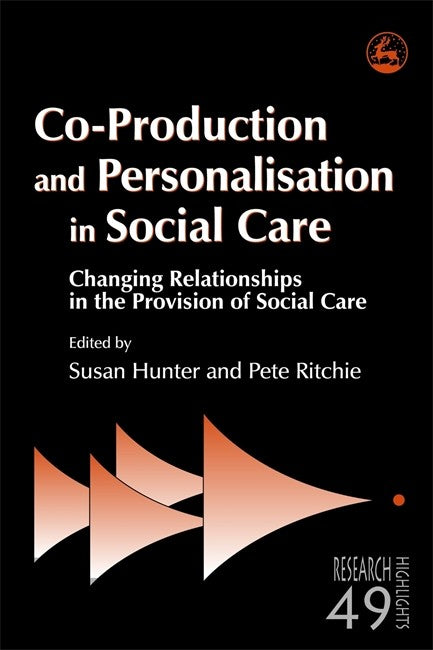Contents: Chapter 1: Introduction. Pete Ritchie, Ex-Director of Scottish Human Services and Susan Hunter, Edinburgh University. Chapter 2: It's About More Than the Money: Local Area Coordination as an Innovative Approach to Supporting People with Disabilities to Get a Good Life and to Creating More Welcoming Communities. Eddie Bartnik and Dr. Ron Chalmers, Directors of Disability Services Commission, Western Australia. Chapter 3: Co-Production through Encouragement: The Braveheart Project. James Mulholland (on behalf of Braveheart). Chapter 4: Co-Production in Supported Housing: KeyRing Living Support Networks and Neighbourhood Networks. Carl Poll, former director of KeyRing. Chapter 5: Co-Production - Support for Self-Employment. Jane Pagler, Wales. Chapter 6: Family Group Conferencing and 'Partnership'. James Cox, Co-ordinator of Family Group Conferencing project, Edinburgh City Council. Chapter 7: Person-Centred Planning and Co-Production. Steve Coulson, Development Worker, Edinburgh Development Group. Chapter 8: Restoring 'Stakeholder' Involvement in Justice. Bill Whyte, Criminal Justice Social Work Development Centre for Scotland. Chapter 9: Recovery in Psychosis: Moments and Levels for Collaboration. Dr. Kristjana Kristiansen, University of Trondheim. Endnote. References. Subject Index. Author Index.
Co-Production is a model of practice in which service providers work with service users in the provision of social care services - in effect, a working partnership. This book explores the theory and practice of this developing innovative practice in social work and related fields.Examples of methods and services designed on co-production principles are given by the experienced contributors, including housing initiatives where the users, rather than professionals, provide support to each other, the development of local area co-ordination as a service response to dilemmas of geography, and whether restorative justice can provide a better direction in re-integration than traditional criminal justice.Drawing together key figures in the field of social care, this book will be essential reading for social care practitioners and service providers, academics, researchers and students.

